#Customer Engagement
Explore tagged Tumblr posts
Text
What is it with working food service and expecting you to be robotic and grey-rock your way through an entire 8+ hour shift? I also don’t understand why your job is at risk if you don’t.
No, I’m not going to continue being kind to you if you are continuously rude to me.
No, I’m not going to sit there and let you berate and verbally abuse me over food - you can buy and cook yourself - without saying sum back.
No, I’m not going to exhaust myself after doing 17.5 different things in the span of under 2 minutes because we are being timed by saying hello and goodbye to every single person that comes to my window — I’m in the middle of taking back to back orders, please for the love of god stop taking it personal.
No, I’m not going to kill myself running an entire station (or 3) by myself only to lick and kiss the top and bottom of your shoes bc you feel you’re entitled to free food and labor bc your fries weren’t fresh enough to your liking.
I’m tired AF of working for a public that will never respect me bc they have literally been taught since grade school to disrespect me. Im tired AF of that being the normal.
It’s 2024. Tip your fucking waitress. Be kind to your fast food cashier, who probably never gets to leave the window, and doesn’t touch your food on most occasions. Stop bitching bc you think you’re owed something by being there. Stop bitching bc you’ve been programmed to consume and think you’re correct in doing so. Stop bitching bc you got your food in five minutes when you should have got it in one - cook at home.
I’m sick of serving rude ass entitled ass people who think they know sum because they think my job is easy and they think they are too good to work it.
Literally if you’re rude and malicious to service workers for any reason outside of they were rude or malicious to you first, you can actually go fuck yourself, disrespectfully. You don’t deserve the convenience of our job, and you and your parent/guardian should be ashamed of yourselves.
#fast food#customer service#customer engagement#fuck fast food#fuck customers#fuck capitalism#fuck ceos#late stage capitalism#capitalism kills#capitalism#anti capitalism#anti capitalist love notes#customersatisfaction#i am so sick of working fast food#i’m so sick of working#workcore#workforce#neurotypicals hate autism#neurotypical societies hate autistic people#the autism strikes again#autistic experiences#autistic things#autistic adult#autistic#rude customers#anti censorship#i hate it here#🫠#i need a sugar daddy#i need a sugar mommy
13 notes
·
View notes
Text
Orientation Day!


Day 1: Orientation Day!
This is the day that I will remember for a long time, beginning my orientation with Cathay Pacific at Pearson Terminal 3, took me for a while to get to the airport by bus, still arrived at Terminal 3 two hours early(and first one there!), But it feels weird to arrive at the airport without any luggage, know what I mean?
As my friends and classmates arrived one after another, we began to follow the guidance of our mentors Jordan, Cadence, and Hana. They are very friendly and professional, they used to be aviation students like us, I hope I can become a professional like them in the future. We entered the meeting room named "pyramid" and listening to their briefings, explaining duties and responsibilities as a "student ambassador", besides their detailed and organizing lecture, it was a fun and engaging activity with Tim Horton refreshments.
I learned my duties as "student ambassador", very familiar with my Popeye's restaurant working experience. However, we also represent Cathay Pacific's brand, means everything we do may impact Cathay's brand, which I will keep reminding myself, while providing new passengers a great and positive experience.
Thank you again to Cathay for this amazing opportunity, very exciting with this journey along with my friends.
3 notes
·
View notes
Text

Spread Christmas Joy with SMS, WhatsApp, and Voice Call Services | SMSGatewayCenter
Discover how SMSGatewayCenter’s SMS, WhatsApp Business API, voice call, two-way SMS, and missed call services can elevate your Christmas campaigns. Connect with customers this festive season!
#SMS Gateway Center#Christmas marketing#SMS services#WhatsApp Business API#voice call services#two-way SMS#missed call services#festive campaign ideas#customer engagement#holiday marketing tools
2 notes
·
View notes
Text
The Currency of Trust: Building a Business on Honor and Integrity
Building trust and honor in business isn’t just good ethics—it’s smart strategy. Discover how it impacts sales, marketing, and customer loyalty! Dive into the latest blog to learn more. #CustomerLoyalty #TrustInBusiness #MarketingWithIntegrity
Trust is the currency of business The Currency of Trust: Building a Business on Honor and Integrity Written By that Hannah Jones Read Time 4 minutes Trust is the bedrock of any successful business. In a marketplace crowded with endless options, trust becomes the defining factor that not only drives sales but also cultivates loyalty and builds a brand’s reputation. But trust doesn’t just…
#authentic marketing#brand credibility#brand integrity#brand loyalty#brand loyalty tips#brand trust#building trust#business ethics#Business Growth#business honor#business reputation#consumer trust#customer engagement#customer loyalty#customer trust#ethical branding#ethical marketing#ethical sales#marketing strategies#marketing with integrity#relationship marketing#responsible business#sales authenticity#sales growth#sales strategies#transparent business practices#trust and sales#trust in business#trust-building strategies#trustworthy brand
3 notes
·
View notes
Text


Introduction: Outdoor events provide unique opportunities for businesses, organizations, and individuals to engage with their audience in a lively and dynamic environment. Whether it’s a festival, trade show, or promotional event, standing out amidst the crowd is essential for success. This is where flag banner standees come into play, offering a versatile and eye-catching solution to elevate your outdoor events.
Benefits of Using Flag Banner Standees Increased Visibility: Flag banner standees offer unparalleled visibility, ensuring that your brand or message stands out from a distance. Their towering height and vibrant colors make them impossible to miss, even in crowded outdoor settings.

Customization Options: One of the key advantages of flag banner standees is their customizable nature. From the design and size to the shape and message, you have full control over how you want your standee to look. This allows you to tailor it to your specific branding and promotional needs.
Portability: Flag banner standees are incredibly portable, making them ideal for outdoor events where you need to set up and dismantle quickly. Most standees come with lightweight and durable materials, allowing for easy transportation and setup without compromising on quality.
Types of Flag Banner Standees: There are several types of flag banner standees available, each catering to different preferences and requirements:
Teardrop Flag Banners: These standees feature a unique teardrop shape, offering a sleek and modern look that captures attention effortlessly.
Feather Flag Banners: Feather flag banners are characterized by their feather-like shape, providing a flowing and dynamic display that moves gracefully with the wind.
Rectangular Flag Banners: Rectangular flag banners offer a more traditional design, with a rectangular shape that provides ample space for displaying logos, text, and graphics.
Tips for Choosing the Right Flag Banner Standees: When selecting flag banner standees for your outdoor events, consider the following factors:
Consider Event Location: The location of your outdoor event plays a crucial role in determining the type and size of flag banner standees you need. For instance, if your event is held in a windy area, opt for standees with sturdy bases and wind-resistant materials.
Determine Size and Shape: Choose standees that are proportionate to the size of your event space and audience. A standee that is too small may go unnoticed, while one that is too large may overpower the surroundings.
Quality of Materials: Invest in flag banner standees made from high-quality materials that can withstand outdoor elements such as wind, rain, and sun exposure. Durable materials ensure longevity and minimize the need for frequent replacements.
Design Tips for Effective Flag Banner Standees: Keep it Simple: Avoid cluttering your standee with excessive text or graphics. Keep the design clean and concise, focusing on key messages and visuals that resonate with your target audience.
Use Contrasting Colors: Choose colors that contrast well against each other to ensure maximum visibility and readability. Avoid using similar shades that may blend together and make your standee difficult to decipher from a distance.
Ensure Readability from a Distance: Prioritize legibility by using large fonts and clear imagery that can be easily read from afar. Test your design from different viewing distances to ensure that it remains impactful regardless of where it’s placed.
Placement Strategies for Flag Banner Standees: Strategic Positioning: Place your flag banner standees in high-traffic areas where they are likely to garner the most attention. Consider factors such as foot traffic patterns, entrance points, and focal points within the event space.
Utilizing Wind Direction: Take advantage of the wind direction when positioning your standees. Position them in a way that allows them to flutter and sway gracefully, enhancing their visual appeal and attracting more attention.
Maintenance and Care for Flag Banner Standees: To prolong the lifespan of your flag banner standees, follow these maintenance and care tips:
Cleaning Instructions: Regularly clean your standees with mild soap and water to remove dirt, dust, and debris. Avoid using harsh chemicals or abrasive cleaners that may damage the fabric or printing.
Storage Tips: Store your flag banner standees in a dry and well-ventilated area when not in use. Fold or roll them carefully to prevent creasing or wrinkling, and avoid exposing them to extreme temperatures or moisture.
Case Studies: Successful Implementation of Flag Banner Standees: Several businesses and organizations have successfully leveraged flag banner standees to enhance their outdoor events. From product launches and brand activations to community festivals and sports events, flag banner standees have proven to be a versatile and effective marketing tool.
Conclusion In conclusion, flag banner standees are invaluable assets for enhancing the visibility and impact of your outdoor events. By incorporating these versatile and eye-catching displays into your event strategy, you can effectively attract attention, communicate key messages, and leave a lasting impression on your audience.
FAQs Are flag banner standees suitable for indoor events as well? Yes, flag banner standees can be used indoors provided there is sufficient space and clearance for setup.
Can flag banner standees withstand inclement weather conditions? Most flag banner standees are designed to withstand moderate wind and rain, but it’s advisable to take them down in severe weather conditions to prevent damage.
Are flag banner standees reusable? Yes, flag banner standees are reusable and can be used for multiple events with proper care and maintenance.
Can I design my own flag banner standee? Yes, many manufacturers offer customizable options that allow you to design your own flag banner standee according to your preferences and specifications.
How long does it take to set up a flag banner standee? The setup time for flag banner standees varies depending on the type and size, but most can be assembled in a matter of minutes without the need for specialized tools.
#flag banner standees#outdoor signage#event signage#promotional banners#outdoor advertising#trade show banners#event marketing#brand visibility#portable signage#customer engagement
2 notes
·
View notes
Text
What is Digital Marketing?
The term "Digital Marketing" is the practice of promoting goods, services, or brands to customers through digital platforms, channels, and technology. It includes a broad range of online marketing initiatives, such as pay-per-click (PPC) advertising, content marketing, email marketing, social media marketing, and search engine optimisation (SEO). Using a variety of digital touchpoints, the aim is to connect and interact with a certain audience.

Uses of Digital Marketing
Brand Awareness: Building and enhancing brand visibility across digital platforms.
Lead Generation: Attracting and converting prospects into potential customers.
Driving Website Traffic: Increasing the number of visitors to a website through SEO, PPC, and content marketing.
Benefits of Digital Marketing
Global Reach: Ability to reach a worldwide audience.
Cost-Effectiveness: More affordable than traditional marketing methods.
Precise Targeting: Ability to target specific demographics and personalize messages.
Measurable Results: Access to detailed analytics and performance metrics.
Real-Time Interaction: Engaging with customers instantly and directly.
Advantages of Digital Marketing
Level Playing Field: Small and medium-sized businesses can compete with larger companies.
Improved Conversion Rates: Better targeting results in higher conversion rates.
High Engagement Rates: Interactive content leads to better customer engagement.
Read More
#digital marketing#seo#off page seo#seo agency#seo marketing#Marketing Strategy#Brand Awareness#Lead Generation#Customer Engagement#Web Traffic#Data Analytics#Conversion Rates#Digital Marketing Tools
4 notes
·
View notes
Text
The Role of CRM in Customer Journey Mapping
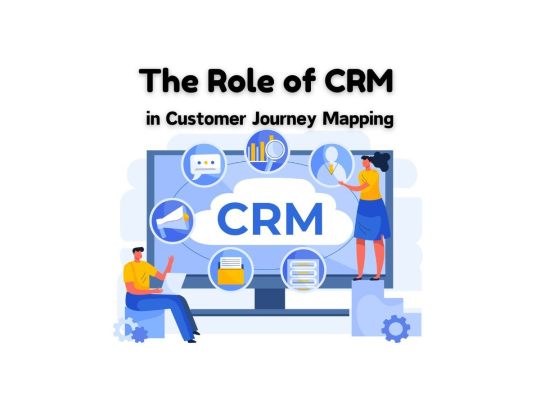
In the digital age, customers expect personalized, seamless experiences at all points of interaction with a brand. To meet this expectation, businesses must have an intimate understanding of their customers' journey. One tool that has proven invaluable in this quest is Customer Relationship Management (CRM) software.
In this blog post, we will explore how CRM plays a pivotal role in mapping the customer journey, helping businesses deliver more personalized experiences and forging stronger relationships with their customers.
Understanding Customer Journey Mapping
Customer journey mapping is the process of creating a visual representation of the customers' experience, from the first contact to the final interaction. This process allows companies to understand the steps customers go through when engaging with their brand, identify areas of strengths and weaknesses, and optimize the customer experience accordingly.
The Role of CRM in the Customer Journey
CRM software serves a critical role in customer journey mapping by providing the data and analytics necessary to create accurate, actionable maps. Here's how CRM aids in this process:
Data Gathering and Integration
First, CRM gathers data from various sources within the business and integrates them into a single platform. This data helps businesses understand more about their customers' preferences, behaviors, and needs, providing the insights required to kickstart the journey mapping process.
Building Customer Profiles
With the data collected, CRM software can build detailed customer profiles that can help form user personas. These personas serve as the foundation for the customer journey map, allowing businesses to envision the steps their typical customer might take when interacting with their brand.
Tracking Customer Interactions
CRM software tracks and records every interaction a customer has with a brand, be it via social media, phone call, email, or in-person. This trace of interactions allows businesses to map out the exact paths customers take throughout their journey, enabling a more detailed and accurate representation of the customer experience.
Analyzing Customer Behavior
CRM software also comes with analytics capabilities, enabling businesses to analyze customer behavior and identify patterns or trends. These insights make it easier to pinpoint areas within the journey where customers may encounter challenges, abandon their shopping cart, or experience a high level of satisfaction.
Personalizing Customer Experience
Equipped with a deeper understanding of the customer journey, businesses can personalize interactions and experiences at scale. Using CRM data, businesses can customize their marketing campaigns, customer service, and other touchpoints to meet unique customer needs at each stage of their journey.
Conclusion
CRM plays an instrumental role in customer journey mapping, enabling a holistic understanding of customers and their interactions with your brand. By integrating CRM in your customer journey mapping efforts, you can create personalized experiences that drive customer satisfaction and loyalty, leading to greater business success.
Remember, while CRM informs customer journey mapping, the insights must be continually analyzed, and the journey updated as customer behaviors evolve. This way, you always stay connected with your customers' experiences and can swiftly adapt to any changes, ensuring you always hold the customer's perspective at the center of your decisions.
#crm#b2bmarketing#growyourbusiness#seo#brandawareness#prospectlistbuilding#contentstrategy#keywordresearch#customer engagement
4 notes
·
View notes
Text
The New Frontier of Customer Support: How Small Businesses Can Leverage Social Media for Unprecedented Success
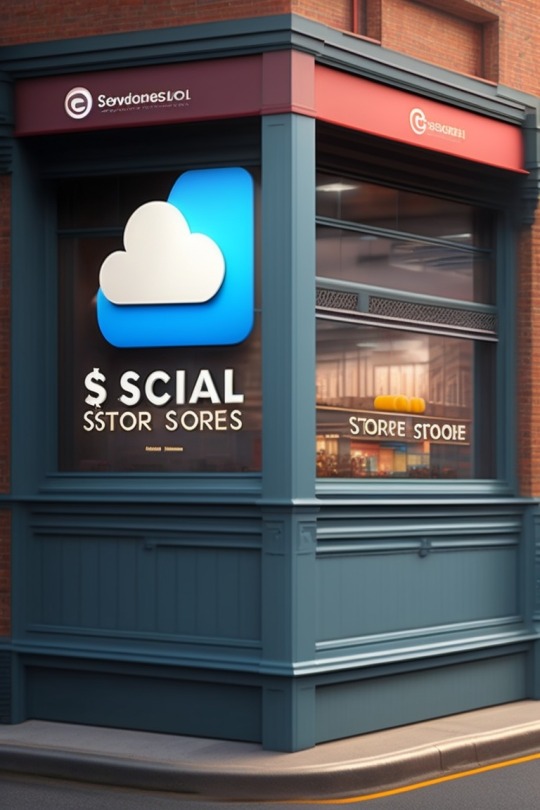
In the digital age, every business, regardless of size, must have a robust online presence to thrive. Yet, for small businesses, the advent of social media is not just an advent in technology; it’s a seismic shift, a game-changer, a new frontier. What once was the domain of large corporations with generous marketing budgets has become accessible to even the smallest enterprises.
With its cost-effective reach and real-time communication capabilities, social media quickly becomes the frontline of customer support and a potent tool for product sales. This article elucidates why small businesses need to harness the potential of social media and outlines strategies to leverage this platform for unprecedented success.
Why Small Businesses Need Social Media
The dynamics of customer engagement have evolved dramatically in the digital era. With an estimated 3.96 billion social media users worldwide, businesses can no longer afford to ignore these platforms. It’s where their customers are and where they need to be.
The benefits of social media for small businesses are manifold. Firstly, it’s cost-effective to increase visibility and build brand awareness. With a well-curated social media presence, small businesses can compete with larger brands on a more level playing field.
Secondly, social media provides a unique opportunity to cultivate customer relationships in a personal, conversational manner. This approach engenders trust and loyalty – critical factors for any small business hoping to grow its customer base.
Thirdly, social media facilitates real-time feedback and customer insights, providing businesses with a wealth of data to drive decision-making and product development.
Leveraging Social Media for Product Sales
Transforming social media from a simple communication tool to a powerful sales platform requires a strategic approach. The process begins with understanding the platform’s nature and user behavior. Not every product will sell on every social media platform. Identifying where your target audience is most active and engaged is important.
One successful strategy is creating shareable content that can organically spread your brand’s message. For instance, informative how-to videos, engaging user-generated content, or stories highlighting your product’s use in everyday life can subtly advertise your product without making your audience feel they are being marketed to.
Another method is utilizing social media advertising tools. Platforms like Facebook and Instagram offer sophisticated targeting capabilities to reach the exact demographic you want to sell to.
Finally, integrating shoppable posts and links into your content can reduce friction in the purchasing process. This ease of access is crucial for converting social media interactions into sales.
Embracing Social Media for Customer Support
Social media has transformed customer support from a reactive function to a proactive one. With a well-executed social media strategy, small businesses can address issues before they escalate and damage brand reputation.
By monitoring social media platforms for brand mentions, businesses can respond to customer concerns promptly and publicly. This visibility demonstrates a company’s commitment to customer satisfaction, enhancing trust and brand loyalty.
Moreover, businesses can leverage social media for proactive customer support. By posting helpful content like FAQs, tutorials, and tips, businesses can pre-emptively address common customer issues.
Undoubtedly, small businesses derive immense benefits from an effective social media strategy. Opportunities presented through social media, from sales to customer support, can propel these businesses to unprecedented success. Within this new frontier, the businesses quickest to adapt will be the ones to thrive. However, those who overlook this pivotal shift may very well be courting peril.
#smb#small business#Social media#Customer support#Product sales#Brand loyalty#Customer engagement#Digital era#Social media advertising#Proactive customer support
10 notes
·
View notes
Text
#unique selling point#unique selling proposition#restaurant tips#restaurant sales#restaurant business#restaurant marketing#restaurant design#restaurant branding#horeca#hospitality#hospitalitytrends#hospitalitynews#hospitality marketing#sales#branding#marketing#customer experience#customer engagement#background music#customer satisfaction#cousine#hospitality management solutions#customer service
6 notes
·
View notes
Text
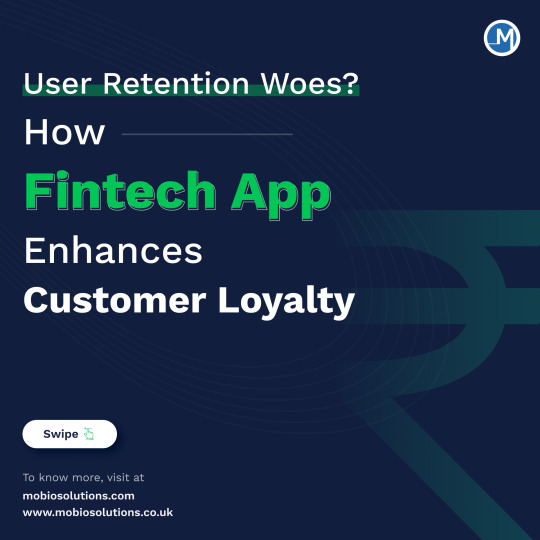
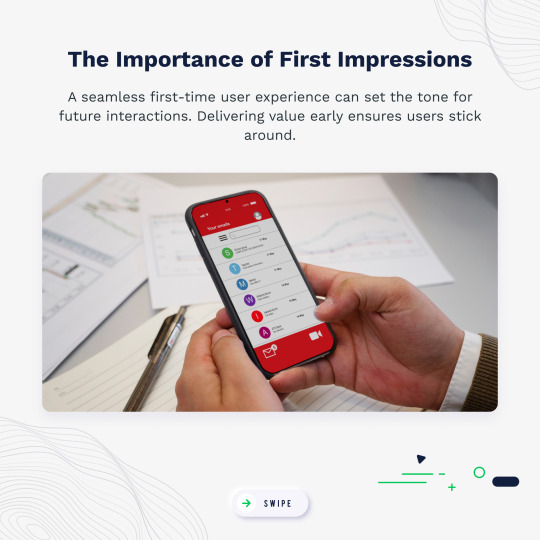
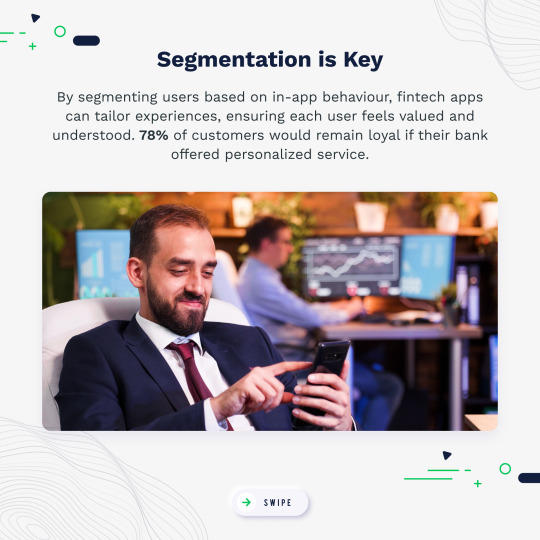
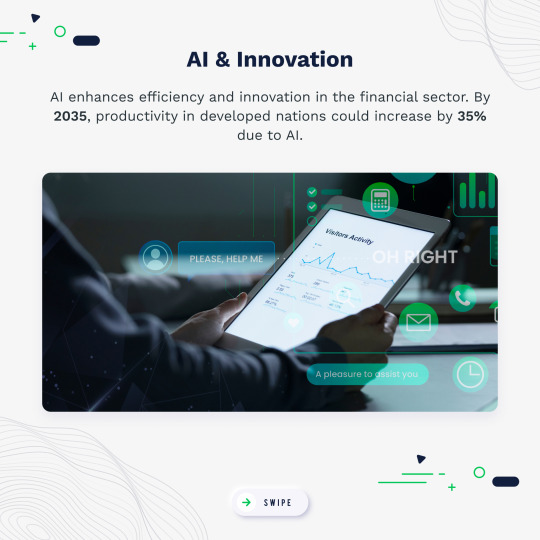
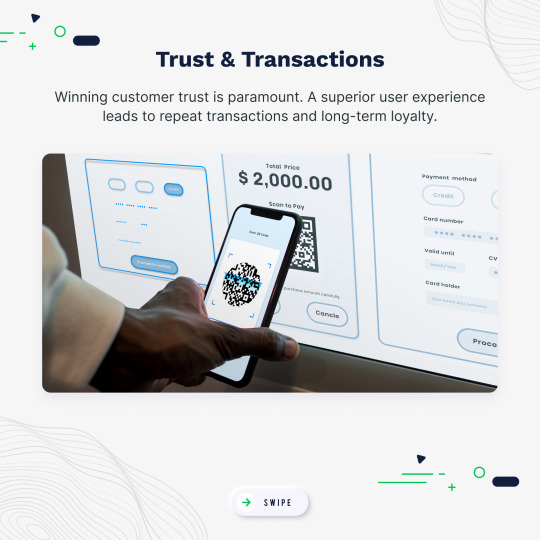
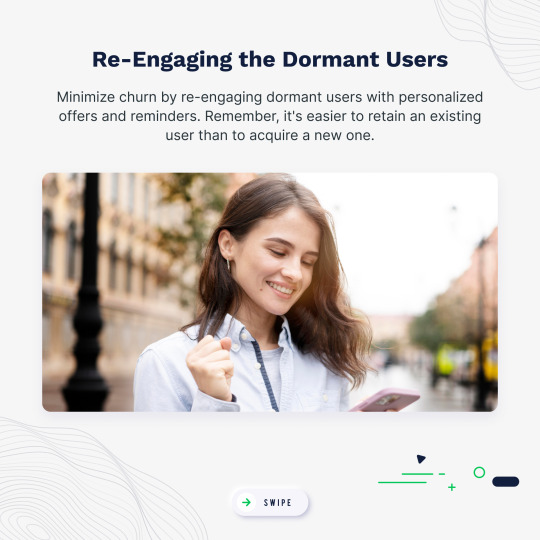
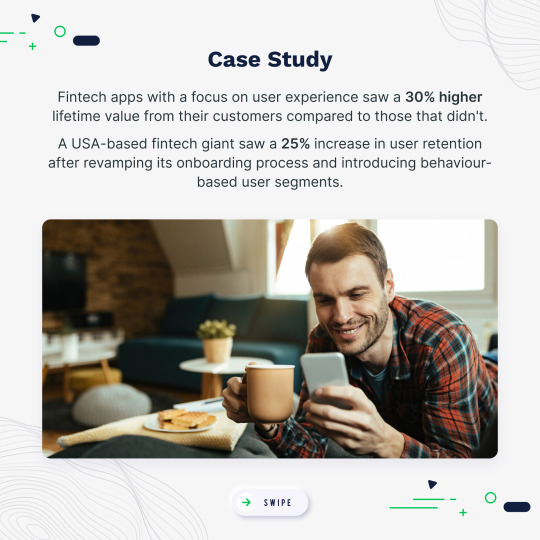
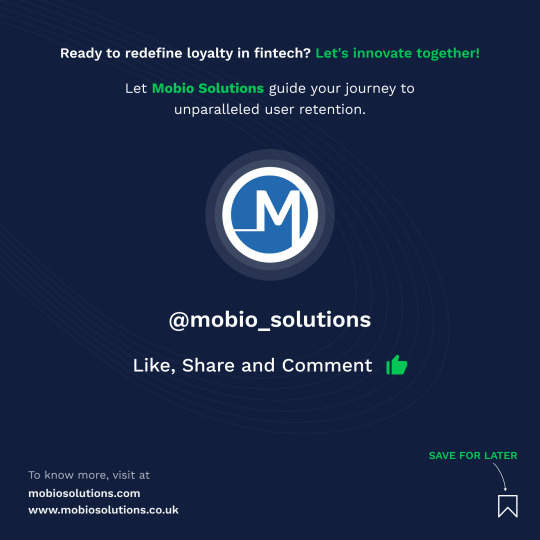
Struggling to keep your app users coming back? Swipe left to uncover the magic of Fintech in boosting customer loyalty! Discover how a Fintech app can turn those retention woes around and create a community of loyal users who can’t wait to log back in. Your solution to building lasting relationships is just a slide away! 🔄📲
#user interface#finance#banking#fintech#apps#innovation#customer loyalty#customer engagement#trends#mobile payments#mobiosolutions
2 notes
·
View notes
Text
Driving Business Growth and Enhancing Online Presence: The Indispensable Importance of a Website
In the digital age, businesses are constantly seeking avenues for growth and establishing a strong online presence. A website plays a pivotal role in achieving these objectives, offering a multitude of benefits for businesses. In this article, we will delve into why a website is crucial for business growth, how it enhances online visibility, credibility, and customer engagement, and the role it plays in data analytics, SEO, and digital marketing strategies.
Elevating Online Visibility and Reach:
A well-designed website acts as a digital storefront, empowering businesses to expand their online visibility and reach. By incorporating strategic SEO techniques and relevant keywords, businesses can improve their search engine rankings, enabling potential customers to discover them more easily. With a website, businesses can break geographical barriers and access a global audience, thus increasing brand exposure and driving business growth.
Establishing Credibility and Trust:
In the virtual landscape, credibility and trust are paramount to success. A professionally crafted website serves as a powerful tool to establish credibility and foster trust among customers. Through a well-structured website, businesses can showcase their expertise, achievements, testimonials, and contact information. This transparency and professionalism contribute to building a positive brand image, attracting customers, and instilling confidence in their minds.
Showcasing Products and Services Effectively:
A website acts as an immersive platform to showcase products and services, offering businesses an opportunity to captivate their audience. By integrating compelling visuals, detailed descriptions, and interactive features, businesses can engage visitors and entice them to explore further. Additionally, an e-commerce-enabled website enables seamless transactions, simplifying the buying process and driving sales growth.
Engaging Customers for Long-Term Success:
Engaging customers is essential for cultivating long-term relationships and sustaining business growth. A website facilitates effective customer engagement through features like contact forms, live chat support, and informative blog sections. These communication channels enable businesses to address customer queries, provide assistance, and gather valuable feedback. By actively engaging with customers, businesses can enhance customer satisfaction, loyalty, and ultimately, their bottom line.
Leveraging Data Analytics for Informed Decision-Making:
A website empowers businesses with invaluable data analytics capabilities, which play a vital role in shaping successful digital marketing strategies. Through website analytics tools, businesses can track metrics such as website traffic, conversion rates, and user demographics. This data-driven approach allows businesses to gain insights into customer behavior, identify trends, and make informed decisions to optimize marketing efforts, improve user experience, and drive business growth.

#website importance#business growth#online visibility#credibility#trust#product showcase#customer engagement#data analytics#SEO#online presence#webdesigning#digitalmarketing#webdevelopment
3 notes
·
View notes
Text
9 MARKETING CHALLENGES AND HOW TO OVERCOME THEM
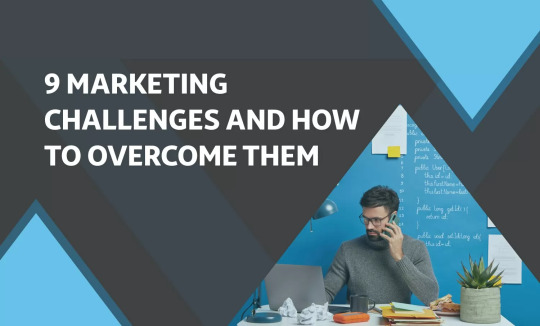
Marketing can be complicated. Whether you’re just starting out or have been in the game for years, the reality is that marketing strategies come and go and continually change. In a time when businesses are trying to utilize every single channel available to acquire new customers — from social media to paid ads to content marketing — it can be hard to know how to fit it all into your daily work and still maintain a quality level of service for your current customers. Big marketing challenges are what all businesses face at one point or another. But with the right tools and strategies, you can turn a problem into an opportunity. In this article, we’ll cover some of the top marketing challenges business owners face today and how you can successfully overcome them.
LEAD GENERATION
According to a survey by Inbound, the main challenge for modern marketers is generating traffic and leads. The increasing competition exacerbates this situation even more. It’s worth considering the huge variety of platforms for promoting goods and services, which can make it really difficult to choose the right direction and concentrate efforts on it.
What should you do?
Create high-quality and in-demand content for your target audience. Surveys show that more than 40% of consumers crave video content, while only 20% prefer to read blogs. Do all marketers know what kind of content their customers want? Do they create truly engaging content? If you’re able to create content that sparks user interest, it’s important to promote it effectively so that users notice it. Nowadays, due to the abundance of content on the internet, it’s not easy to compete for consumers’ attention, but if you keep up with trends and experiment with formats, you’ll succeed as a marketer.
ACHIEVING ROMI
Marketing ROI or return-on-marketing-investment (ROMI) is a sub-metric of ROI that measures the efficiency of a marketing campaign for the purpose of assisting better decision-making for future investments.
The issue of the cost-effectiveness of marketing and promotional expenses has become increasingly important in recent years, as evidenced by survey data. Tracking and ensuring ROMI can be an even more challenging task if there is a lack of in-depth analysis of the effectiveness of each channel and each marketing activity, as well as a lack of information sharing between different departments within a company.
After all, achieving ROMI largely depends on directing resources towards the most conversion-focused channels, which is impossible without analyzing data and metrics.
What should be done?
Firstly, it is important to improve the interaction between the marketing and sales departments. Implementing software such as CRM systems to increase sales and analyze data can help identify weaknesses and strengths in business processes and find areas for growth. Tracking traffic sources and lead conversions into sales provides a clear understanding of whether your marketing is working or not, and whether budgets are being spent correctly.
According to surveys of marketers, the most effective strategy is inbound marketing in combination with SLA (Service Level Agreement) (the company’s approach to organizing IT processes).
Recall that inbound marketing includes SEO, social media branding, blogging and various internet platforms, podcasts, videos, and other types of content marketing. The inbound marketing strategy is based on the need to generate interest among consumers.
BUDGET SIZE
Another challenge is justifying the expense on marketing promotion, which marketers are forced to defend. This is especially relevant for small companies.
How to solve it?
Measure ROMI. Analyze the effectiveness of advertising channels. The key to ensuring sufficient expenditure on promotion is measuring ROMI. Marketers surveyed cite measuring ROMI as the key to ensuring sufficient expenditure on promotion. On average, specialists who work with measuring the effectiveness of marketing investments have a budget that is 180% higher.
IM4U Marketing Agency was approached by a client who, with a fairly large marketing budget, had almost no results. We began by reviewing the client’s business goals and current marketing budget. Then we identified areas where the client could optimize their budget by reallocating funds or using more cost-effective marketing channels. Finally, IM4U Marketing Agency created a customized plan that maximized the client’s budget to achieve their desired outcomes while minimizing costs. We were continuously monitoring the campaign’s performance and adjusted the plan as needed to ensure the client gets the most out of their marketing budget.
INCREASING WEBSITE EFFECTIVENESS
Another problem is creating a truly effective website that not only attracts visitors, but also converts them into customers and achieves financial goals. The problems that marketers solve in this process can be quite diverse, such as how to create and optimize content or how to develop an emotionally engaging design.
What is the solution?
It is important to optimize the site’s loading speed and ensure its adaptability to mobile platforms. If your problems are due to a lack of necessary specialists and finances, know that there are many marketers like you. This problem is particularly common in small firms. Hire a freelancer or consult a small, responsible agency. Marketing channel integration platforms can also help simplify a range of website improvement tasks.

CHOOSING TECHNOLOGICAL SOLUTIONS
Reviews, case studies, and reports can help marketers choose suitable software and platforms to implement their daily tasks. However, these reviews are often conflicting, which can make the choice more difficult.
What can be done?
Seek advice from friends, colleagues, and professionals, and closely examine all video reviews and case studies on working with various tools. The trial period for many services allows for a deeper understanding of the product and how it can solve your specific problems – do not overlook this opportunity.
Marketing automation using online platforms is designed to simplify your work. The survey showed that about 40% of marketers are already using more than 2 services and will continue to do so in the future.
THE PROBLEM OF CONTENT TARGETING
A crucial aspect of marketing is precise targeting. Marketers know that by relying on detailed buyer personas, they can conduct successful advertising campaigns with high conversion rates. Study your target audience as well to achieve success in your marketing campaigns.
More information in our article “How to improve your PPC Ads – 8 advice you didn’t know”.
THE DEVELOPMENT OF AI
Certainly, the development of AI represents a significant challenge for marketers today. On the one hand, AI tools, such as ChatGPT, Midjourney, Jasper can offer great benefits, such as increased efficiency, more accurate data analysis, and faster decision-making. On the other hand, integrating AI into existing marketing processes and workflows can be a complex task that requires significant planning and preparation.
How to overcome?
To overcome this challenge, marketers need to invest in training and education to ensure that they have the skills and knowledge necessary to use AI effectively. Additionally, marketers need to work closely with IT and data teams to develop new systems and processes that can integrate AI tools into existing workflows. Finally, marketers need to be mindful of the ethical implications of using AI in their work and ensure that they are using these tools in ways that are transparent, ethical, and respectful of customer privacy. With the right approach, however, AI can be a powerful tool that helps marketers to achieve their goals more efficiently and effectively.
RECRUITING TALENTED SPECIALISTS
Demand for technically advanced and creative marketers in the job market today exceeds supply like never before. Talented specialists are needed by everyone, and searching for the right fit for your company can take months, while the work needs to be done now.
How to solve?
Create attractive conditions, taking into account that maintaining a balance between professional and personal lives is important for 69% of job seekers, while 41% are focused on career progress.
Also, growing specialists within your own company can help you solve this problem. Training and mentoring by experienced professionals can promote the development of diverse skills in key employees, to apply them in your work. This takes time and resources, so choose and train the most capable and eager ones.
FALSE PROMISES NEGATIVELY AFFECT BRAND ATTRACTIVENESS
Companies like Allstate Insurance and Avis Car Rental have set themselves on the path to inevitable failure by using enticing slogans and appeals. Meanwhile, their services never lived up to their grand promises. While Allstate promises “You’re in good hands with Allstate”, their customers are far from convinced. On the ConsumerAffairs website (which publishes consumer ratings for various companies), this insurance company has a rating of 3.7 out of 5. Avis’ slogan “We try harder” is also far from the truth, with a rating of 3.2 out of 5.
How to solve?
Perhaps a clever slogan can serve as a means of attracting new customers to your store or website, but it’s important to remember that customers need concrete actions, not pretty words. If a visitor can’t find what you promised them, all your efforts will go to waste. So let’s only make promises that we can keep in order to effectively manage consumer expectations and loyalty.
CONCLUSION
In conclusion, marketing is a constantly evolving field, and the challenges faced by marketers are diverse and complex. However, with the right strategies and techniques, these challenges can be overcome. Brands need to focus on building a strong online presence, creating meaningful and authentic connections with customers, leveraging data and technology to gain insights and drive decision-making, and nurturing talent within their organization. By keeping up with industry trends and being adaptable, marketers can succeed in navigating the ever-changing marketing landscape and achieving their business goals.
LET IM4U DIGITAL MARKETING AGENCY HELP YOUR BUSINESS TO BUILD SUCCESSFUL MARKETING STRATEGY
Unlock Your Business’s Digital Potential with IM4U Marketing Agency! Our agency is ready to help you. For more information, book a consultation, and we’ll help you build a successful marketing strategy.
#marketing challenges#overcoming obstacles#marketing strategies#business growth#customer engagement#digital marketing#target audience#branding#competitive advantage#market research#marketing trends#social media marketing#content marketing#lead generation#conversion optimization
2 notes
·
View notes
Text
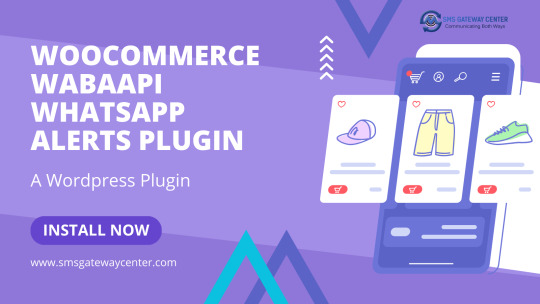
WooCommerce WABAAPI WhatsApp Alerts: Enhance Your E-Commerce Communication
Unlock the power of instant messaging in your WooCommerce store with the WABAAPI WhatsApp Alerts Plugin. Effortlessly send customized WhatsApp order notifications, manage customer engagement, and enhance your online store's performance with our user-friendly, free plugin.
#SMSGatewayCenter#WooCommerce WhatsApp Alerts#WABAAPI Plugin#Instant Order Notifications#E-Commerce Messaging#WooCommerce India#WhatsApp Integration#Customer Engagement#Online Store Communication#WooCommerce WhatsApp Add-on#Automated WhatsApp Messages#WooCommerce Custom Alerts#WooCommerce Plugin India#sms gateway center
2 notes
·
View notes
Text
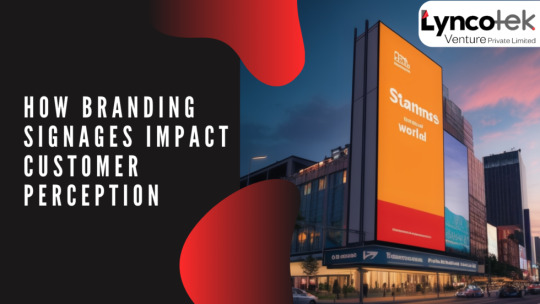
Introduction to Signage The visual representation of a brand is greatly influenced by signage. Branding Signages is seen everywhere, subtly conveying signals to potential clients on storefronts and business interiors. Physical branding through signage is still important in this digital age of online marketing dominance.
Importance of Branding Signages: Enhancing Brand Visibility: The Significance of Branding Though they draw notice and entice potential buyers, branding signage serves as silent salespeople. Foot traffic and brand identification can be greatly increased by carefully placing well-designed signage.
Creating Brand Identity: In order to establish a strong brand identity, branding must be consistent across all channels. A brand’s promises, beliefs, and personality are all tangibly represented by its signage. Customers’ trust is strengthened and brand recall is reinforced.
Types of Branding Signages: Exterior Signages: Outdoor banners, billboards, and storefront signs are examples of exterior signage. The first point of contact between a brand and its audience is these signages. They ought to be eye-catching, educational, and authentically represent the essence of the brand.

Interior Signages: Directional signs, window displays, and wall graphics are examples of interior signage in a store or office. They serve as a customer’s guide, improve the atmosphere, and reaffirm company messaging.

Factors Influencing Signage Effectiveness Design: A signage’s design should elicit the intended emotional response from the viewer while being consistent with the brand’s visual identity. Signage that has an impact is mostly dependent on elements like color, font, and imagery.
Placement: Optimal visibility and exposure are ensured by strategic placement. Whether it’s within a retail establishment or on a busy street, signs should be positioned where the target audience can see them easily.
Visibility: A sign’s efficacy depends on its visibility. Its visibility is influenced by various elements, particularly in busy or poorly light areas. These elements include size, contrast, and illumination.

Apple: Minimalist Storefronts The luxury image of Apple is widely associated with its sleek, backlit Apple logos and minimalist shops. These signs invite onlookers inside by exuding an air of luxury and sophistication.
Measuring Signage Impact Customer Surveys Customer comments on the brand’s signage can give important information about how successful the signage is as well as where it needs to be improved.
Sales Analysis: To gauge the effect of new signage on foot traffic, conversion rates, and overall income, sales data from both before and after implementation should be analyzed.
Future Trends in Signage: It is anticipated that interactive and digital signage will proliferate as technology develops. Customer engagement and brand connection will be further improved by augmented reality (AR) and personalized signage experiences.
Conclusion Finally, it should be noted that branding signage has a big impact on how consumers perceive brands and their success. Businesses may create memorable brand experiences that resonate with their target audience by strategically utilizing design, positioning, and visibility.
FAQs 1. How can I ensure my signage stands out amidst competition? By focusing on unique design elements, bold messaging, and strategic placement, you can make your signage more attention-grabbing.
2. Are there any regulations I need to consider when designing exterior signages? Yes, it’s essential to familiarize yourself with local zoning laws and regulations governing signage size, placement, and illumination.
3. What role does signage play in building brand trust? Signages act as physical representations of a brand’s promises and values, contributing to brand consistency and credibility.
4. How often should I update my branding signages? It’s advisable to periodically refresh your signages to reflect any changes in branding, messaging, or design trends.
5. Can signages help improve customer navigation within a store? Yes, well-designed directional signages can enhance the customer experience by making it easier for them to navigate through your store.
#branding signage#signage#commercial signage#retail signage#outdoor signage#indoor signage#brand visibility#customer engagement#billboard signage#window displays
2 notes
·
View notes
Text
#Inbound SMS#Outbound SMS#SMS Marketing#Customer Engagement#Marketing Strategies#Text Marketing#SMS Campaigns#Business Communication
0 notes
Text
The Premier Email Marketing Company in Haryana: Robotic Sysinfo Leads the Way

In digital marketing, email marketing is one of the most effective methods. It has direct access to a business' audience and gives an excellent opportunity to engage with prospects as well as growth for any business. With the numerous companies offering email marketing solutions, how do you know which company to believe and hand over your brand's email campaigns? There is always the case of robotic Sysinfo, an email marketing company in Haryana. Let's talk about why it is one of the leading companies that every business puts its faith into its effective email marketing strategy.
1. The Power of Email Marketing in Today's Digital World
Email marketing is one of the oldest and most trusted practices of business correspondence with customers, generating sales, and developing long-term relationships. With more than 4 billion email users worldwide, as recently reported by Statista, it's no surprise that companies resort to email campaigns to enhance their reach. In Haryana, Robotic Sysinfo has capitalized on this trend to assist businesses in increasing their marketing ROI. They create tailored email marketing campaigns that strike a chord with the receiver and are measurable in their outcome.
2. Why Robotic Sysinfo Is Different
Robotic Sysinfo, a Premier Email Marketing Company in Haryana has established a niche by offering customised email marketing solutions to clients belonging to various sectors. The company has over ten years of experience in email marketing and has mastered its art through time, always staying ahead of the curve when it comes to changing technologies.
One of the essential features that differentiate Robotic Sysinfo from other companies is that they are choosy about details. From email list segmentation to creating excellent content, the tactics that this company has to offer will be specific to the client's requirement. The company takes care to create messages that will effectively reach the target audience and not send the same old general emails. This kind of personalization is what generates a higher open rate, better engagement, and ultimately more conversions.
3. High Technology and Innovation
Robotic Sysinfo is not just an email sender. They know that data and analytics are important. Advanced tools track and analyze email campaign performance for the company. It is all data-driven, ensuring optimization of designs, subject lines, and timing in each email campaign.
More than that, though, Robotic Sysinfo also included automation into their email marketing. It saves time but will still communicate with the audience on a consistent basis. For example, an automated email sequence lets businesses nurture leads with the right messages at the right times, all without sending each one of those emails individually.
4. Results-Driven Approach
At Robotic Sysinfo, they focus on the results. They do not send out e-mails and sit back to hope that everything will go well. Rather, they keep track of open rate, click-through rate, and all other KPIs, which prove that each campaign brings some value. There is a specific team that tracks each campaign, learns from mistakes made in previous campaigns, and enhances strategy for future ones.
The track record speaks for itself. Hundreds of clients have witnessed a huge surge in conversions and customer retention after working with Robotic Sysinfo. With this expertise, businesses in Haryana can be assured that they are working with a firm that delivers real, measurable results.
5. Customer-Centric Philosophy
But what actually makes Robotic Sysinfo a top-class email marketing agency is their commitment towards their clients. They take out the time to know each client's goals and problems and then customise their approach to meet them. Whether a small business in a city or a huge enterprise, at Robotic Sysinfo, all its clients are dealt with the same amount of passion and care.
Read More:
Conclusion
If you’re looking for an email marketing company in Haryana that delivers results, look no further than Robotic Sysinfo. With a unique blend of technology, data-driven strategies, and a customer-first mentality, they have proven time and time again that they are the premier choice for businesses looking to thrive in today’s digital landscape. By choosing Robotic Sysinfo, you’re not just investing in an email campaign; you’re investing in the growth and success of your business.
#email marketing#Robotic Sysinfo#email campaigns#digital marketing#Haryana#email marketing company#business growth#data-driven strategies#email automation#customer engagement#ROI#marketing solutions#email list segmentation#email performance#business success#email marketing strategy#marketing results#customer retention#business development#digital marketing trends#personalized email campaigns
0 notes